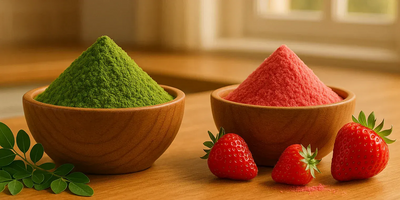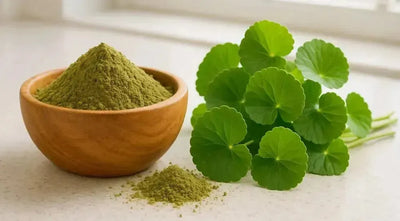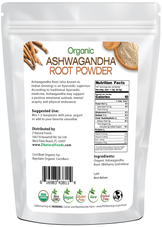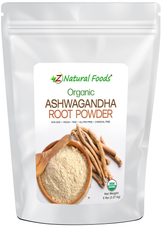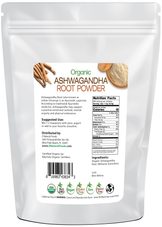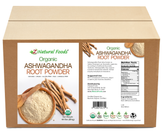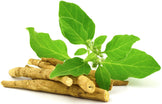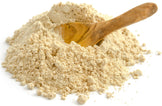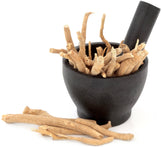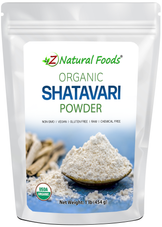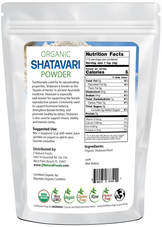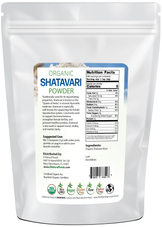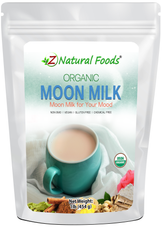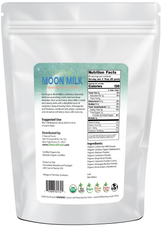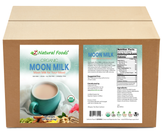Description
Description
In order to answer this question correctly, it is essential first to define what the term “better” means and its relationship to specific herbs that may affect your overall well-being.
In the case of these particular herbs, better can be defined based on their long- and short-term nourishing qualities.
So, we must look at these herbs' nourishing attributes and their specific effects when accurately defining the term “better” in this particular context.
Please note that when you read other articles discussing these herbs, the author often approaches them from a very isolated or reductionist point of view.
For example, the authors frequently make the mistake of not looking at the essential aspects of the research on how these herbs' various mechanisms of action respond differently in men's and women's bodies.
This mistake leads to misinterpretation and short-sightedness of an herb's true capabilities. The following is an excellent example:
Shatavari may help to regulate the production of the luteinizing hormone. In women, luteinizing hormones play a critical role in triggering ovulation and also trigger the creation of steroid hormones in the ovaries. In men, luteinizing hormones play a vital role in sperm production and cause Leydig cells of the testes to produce testosterone.
Please refer to our other articles about these specific herbs for a more in-depth perspective:
Every culture defines how and why an individual herb is considered “better” based on various factors.
According to Western medicine, herbs are evaluated for effectiveness based on several categories. One of the greatest misconceptions in herbal medicine is our unrealistic expectations regarding what we should feel when using an herb for an extended period.
This misconception happens because people believe many herbs within a specific category, regardless of the plant parts used (or the supportive herbs added in the case of a formula), will give similar results.
For example, an herb used for its medicinal qualities, like echinacea, is often used for a specific period and purpose.
Echinacea's root and aerial portions have their individually unique medicinal attributes. The aerial portion is considered an immune stimulant where the root is more modulating. Combining both parts creates a perfect balancing effect. A properly formulated product with a specific targeted approach will combine the appropriate part/parts with the necessary supportive herbs.
Because you are using medical herbs in a precisely targeted manner, they are not explicitly designed to be used for an extended period. When the desired effects are achieved, it is unnecessary to continue using it. Then, there are what I like to call gateway herbs. These singles or formulas can be used for an extended period or on an as-needed basis and have very noticeable positive effects in a short period, like the herb Kava root.
On the other hand, adaptogens produce what are known as “nonspecific responses” and are commonly used for extended periods. With adaptogens, it is not uncommon to see favorable responses (specifically an increase in energy and stamina) after a reasonable period. What is often misunderstood is believing that the progression you saw at the beginning continues to work linearly. Because adaptogens support your ability to sustain a balanced state of well-being, once your body gets to that point, its job is to maintain it. This better overall feeling of well-being is your new normal. We use adaptogens for an extended period to maintain those well-being levels. Please note that the above examples have many subcategories within the primary categories.
Traditional Chinese Medicine looks at foods and herbs from a slightly different perspective. According to TCM, they are not defined as healthy or unhealthy but, instead, if it is the right food for an individual at a specific time. According to Traditional Chinese Medicine (TCM), all foods and herbs have energy. TCM teaches us that foods and herbs have Yin/ Yang energy, five temperatures, five flavors, and four directions. In these principles, Yin and Yang's action is the general property, and temperature is the extremeness of the properties. In simple terms, Yin is cooling, builds blood, and has downward moving energy. Yang is warming, energizing, and has upward-moving energy. The primary system used in TCM is Tonic herbalism or what other forms of medicine would call tonics with adaptogen-like qualities.
In simple terms, four primary fundamental aspects define a tonic herb:
- Tonic herbs create and support a state of physical, mental, and emotional well-being through the appropriate balance of Yin and Yang energy, thereby achieving vibrant health.
- Tonic herbs can be used for an unlimited period with no adverse effects
- No matter how long an individual uses tonic herbs, they never build up a tolerance.
- True tonics come from their authentic source and spiritual homeland. This principle, known in Daoist herbalism as Di Tao, makes a vital difference in potency and efficacy.
Finally, Ayurvedic medicine works on three primary doshas (Vata, Pitta, and Kapha), which are comprised of a combination of elements (water, earth, air, fire, and ether).
- Vata: Movement of blood, oxygen, and neurotransmitters
- Pitta: The fire that deals with physical digestion and mentally digesting life experiences.
- Kapha: The structure of grounding and stability governing nourishment and growth.
One of the unique principles of Ayurveda is the understanding of health as a result of the coordinated functioning of the soul, mind, and body in an intimate relationship with everything else in the cosmos- material and nonmaterial. It believes the constituent factors of the human body and the cosmos are the same.
One proper way to assess the effectiveness of natural substances like food, herbs, and spices on any individual is to look at how each of us may respond uniquely. It is challenging to provide specific guidelines because we all have intrinsically unique differences in how we react physically and emotionally to what we consume.
Ashwagandha: A True Calming Adaptogen
Ashwagandha is a member of the exclusive category known as adaptogens. It has gained popularity in the West due to its potential to support one’s ability to adapt to daily stressors. Human studies confirm an impressive list of nourishing qualities and benefits of this extraordinary adaptogen.
Withanolides (lactones) are a group of compounds found in Ashwagandha that may support its ability to respond to external stressors healthily and work as an immune amphoteric. The two main lactones that are believed to contribute to its effects are Withaferin A and Withanolide D. Other active constituents in Ashwagandha that have been classified as “anti-stress” agents are sitoindosides and acylsterygulcosides. While some ashwagandha preparations on the market combine the root and leaf, the root is the portion of this botanical that is most traditional, primarily used, and known for its adaptogenic properties.
Before we discuss the remarkable properties of Ashwagandha, it is essential to define what true adaptogens are and their purpose. Adaptogens are classified as management and supportive herbs and fungi because the benefits are widespread through nonspecific physiological responses. What makes all adaptogens unique is their ability to adapt to the harsh conditions in which they are grown. This adaptability allows them to thrive and become robust plants. As the research on adaptogens has been compiled over the years, herbalists and scientists have learned and concluded how each adaptogen's energy (warming, cooling, drying, moistening) and constituents balance has allowed them to be used in a more specific targeted approach. In simple terms, the use and function of adaptogenic herbs support the body's ability to have a healthy stress response.
We have learned that the essential factor that makes a plant an actual adaptogen is that it must work through one or both of the body’s master control systems.
1) The HPA Axis (Hypothalamic-Pituitary-Adrenal Axis) is a complex system of neuroendocrine pathways and feedback loops that maintain and support homeostasis in response to chronic stress. The HPA axis interfaces the endocrine, nervous, immune, digestive, reproductive, and cardio systems.
2) The SAS (Sympatho Adrenal system, aka fight or flight) is a complex system that connects the sympathetic nervous system to the adrenal medulla. In simple terms, it is our fight-or-flight response. A triggered response floods our system with adrenalin and releases hormones epinephrine and norepinephrine from the adrenal medulla. This response increases blood pressure, blood sugar, and heart rate and suppresses digestion. This releasing of hormones and redistribution of blood allows the mind and body to respond and survive.
Calming adaptogens support a sense of calm and are for those who need support due to a high-stress lifestyle. Calming adaptogens are primarily but not exclusively for those who need to rebuild vital energy but are not necessarily low on vital energy. The effects of these adaptogens build over time. Ashwagandha is a perfect example of a calming adaptogen and is considered one of the best tonic herbs in traditional Ayurvedic medicine. When combined with Black Cohosh and kava, Ashwagandha also acts as an antispasmodic. According to TCM (Traditional Chinese Medicine) principles, Ashwagandha is a warming and acrid Yang tonic with a particular affinity for the kidneys. It also has Shen qualities due to its ability to calm the mind. Because TCM recognizes its protective qualities, Ashwagandha is also considered a Qi-tonifying herb supporting defensive Qi.
In one study, Effects of Ashwagandha on stress manifested anxiety, The treatment group showed a “significant reduction” in “scores on all stress assessment scales.” An even more impressive result was the reduction in serum cortisol levels.
Shatavari: A Traditional tonic with adaptogen-like qualities
Shatavari is an essential herb in the long-standing tradition of Ayurvedic medicine. Also known as the queen of herbs, Shatavari is regarded as a highly versatile female tonic for supporting and strengthening women at various stages of life. According to Ayurvedic energetics, Shatavari is sweet and bitter in taste, cooling in temperature, and reduces heat and dryness due to its moistening ability. It is also believed to have strong building qualities leading to its balancing, nourishing, and rejuvenating qualities.
High vata (too much heat and dryness) are often responsible for menstrual irregularities based on Ayurvedic principles. It is believed that Shatavari may nourish and rejuvenate the reproductive system. Therefore, its cooling and nourishing properties are considered suitable for the hot, dry flushes associated with menopause and the burning irritation of urinary infections. But this is only a taste of what this herb can actually do.
Some exciting research exists regarding Shatavari’s ergogenic (performance and recovery enhancing) effects. The following was stated in a paper titled The Effects of Asparagus Racemosus Supplementation Plus 8 Weeks of Resistance Training on Muscular Strength and Endurance. “The results demonstrated that during the eight weeks of resistance training, supplementation with 500 mg·d−1 of A. racemosus elicited greater mean percentage and individual increases in bench press 1RM, mean and individual increases in bench press repetitions to failure, and a greater rate of increase in bench press training loads compared to placebo. It was hypothesized that the ergogenic effects of A. racemosus were due to its antioxidant properties.”
While there is preliminary research showing that Shatavari may alleviate symptoms of depression via modulating the HPA axis, increasing BDNF levels, and GABAergic neurotransmission, human studies need to be done to confirm these claims.
Furthermore, a published study discussing combining multiple Ayurvedic herbs like Ashwagandha and Shatavari concluded that these herbs were more effective in combination due to their increased antioxidant potential.
Combining Ashwagandha and Shatavari is a common practice in Aryuvedic medicine as they are believed to complement each other. Ashwagandha is considered to have warming properties, and Shatavari is regarded as a cooling herb; therefore, when combined, they create a balancing effect. This combination is also considered to be very effective when given to people in a frail and weakened state where hormonal and other biochemical imbalances are present. Ayurvedic principles believe this should be taken before bed and combined with a fat source like ghee.
In conclusion, it is difficult to say which one of these herbs is specifically “better” for every individual. We all have unique needs based on our daily lives and stressors. That said, depending on your specific lifestyle and personality, the above information should be an excellent introductory guide to help you choose what may be suitable for you.
For more information about our Organic Ashwagandha Root Powder, go here:
Organic Ashwagandha Root Powder
For more information about our Organic Shatavari Powder, go here:
For more information about our Herb and Root Powders, go here:

